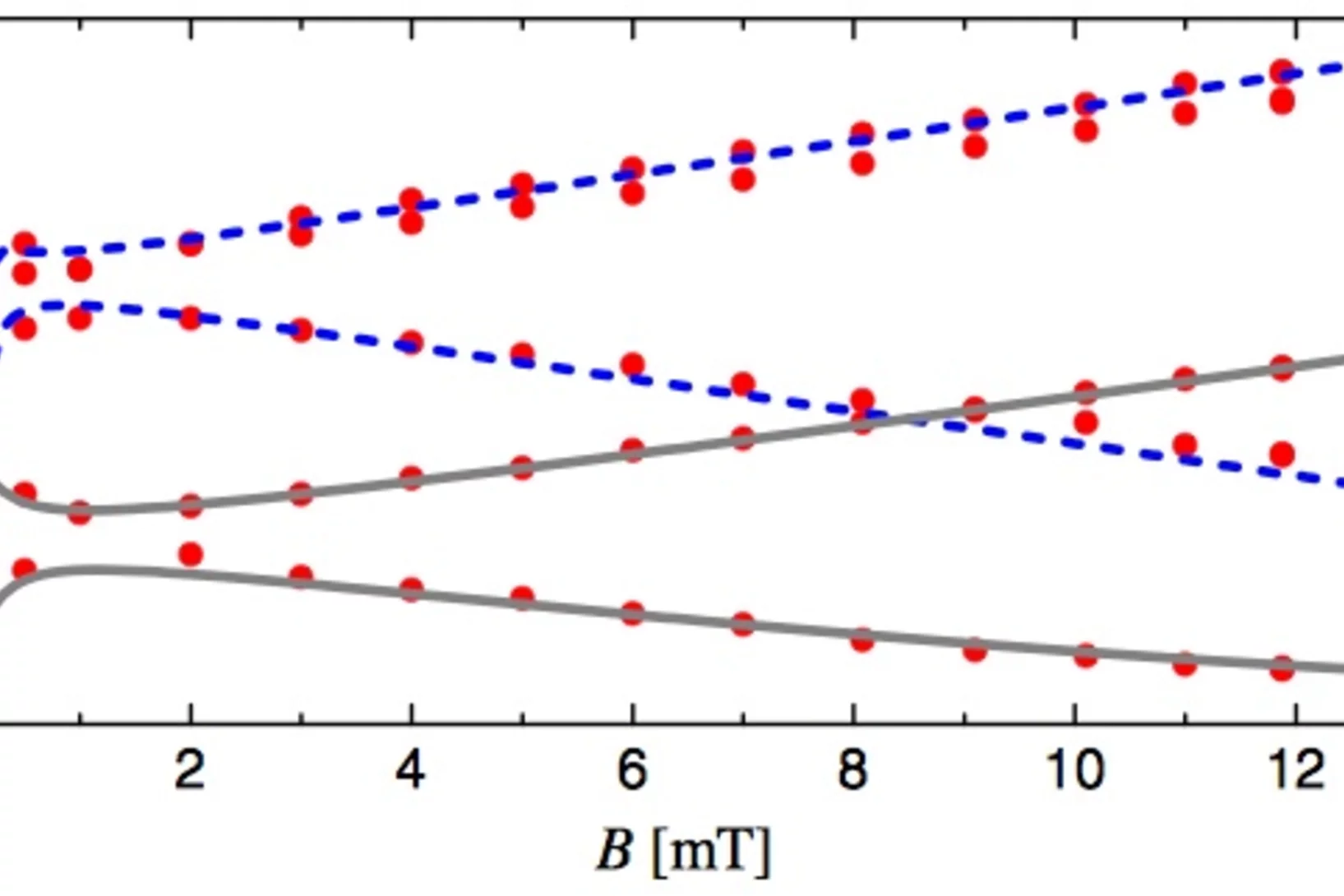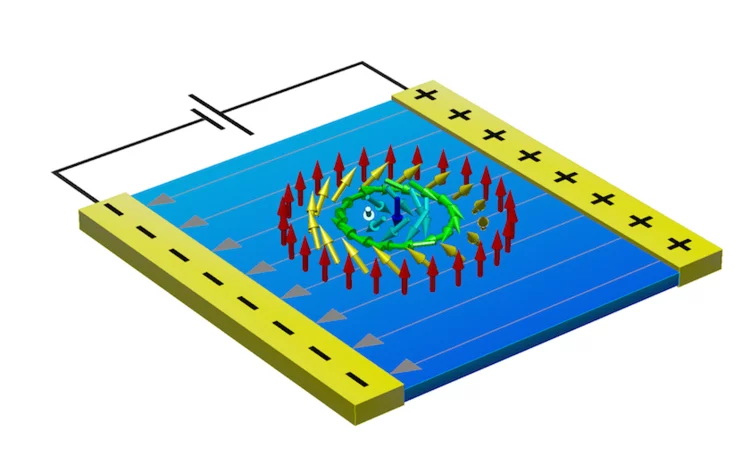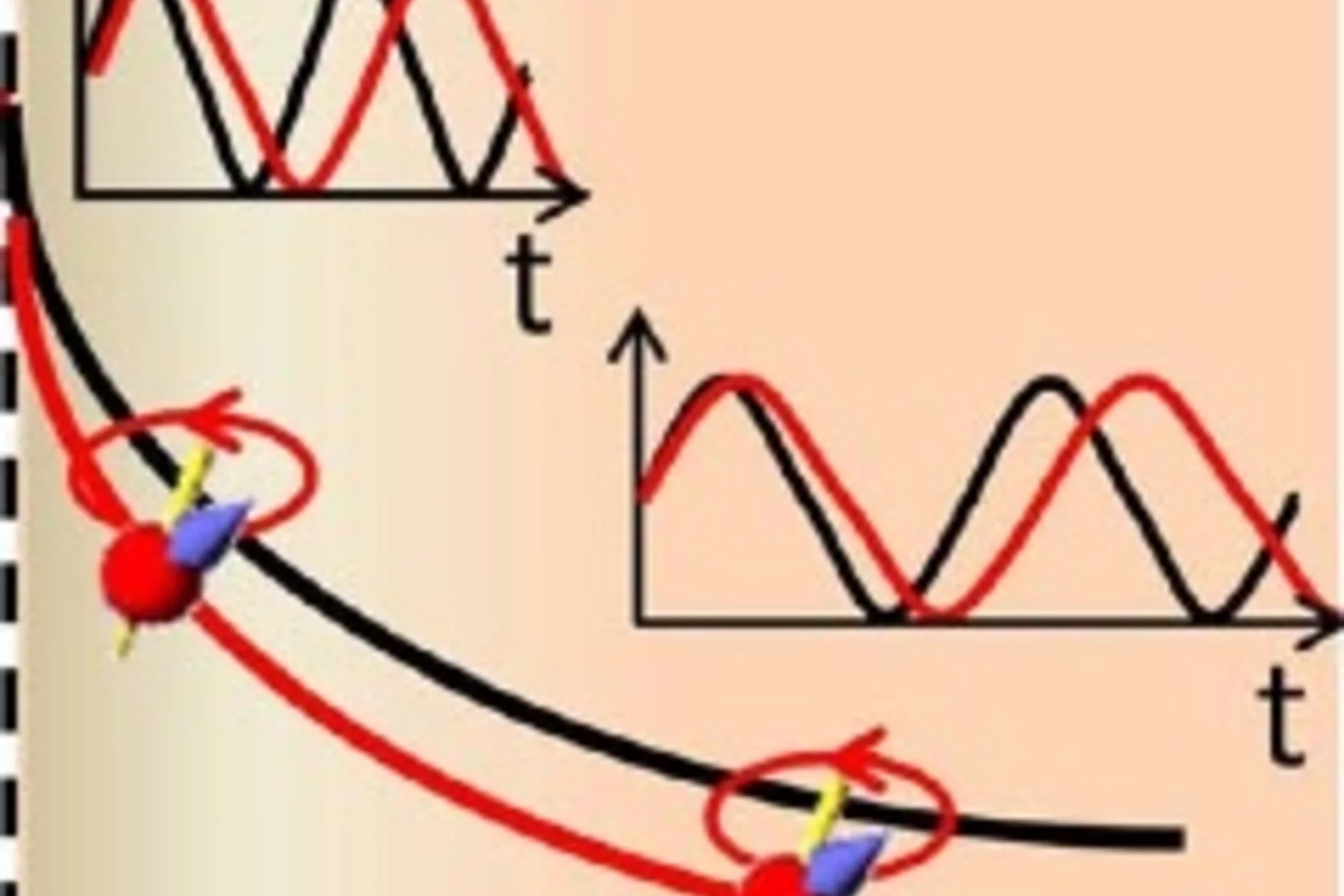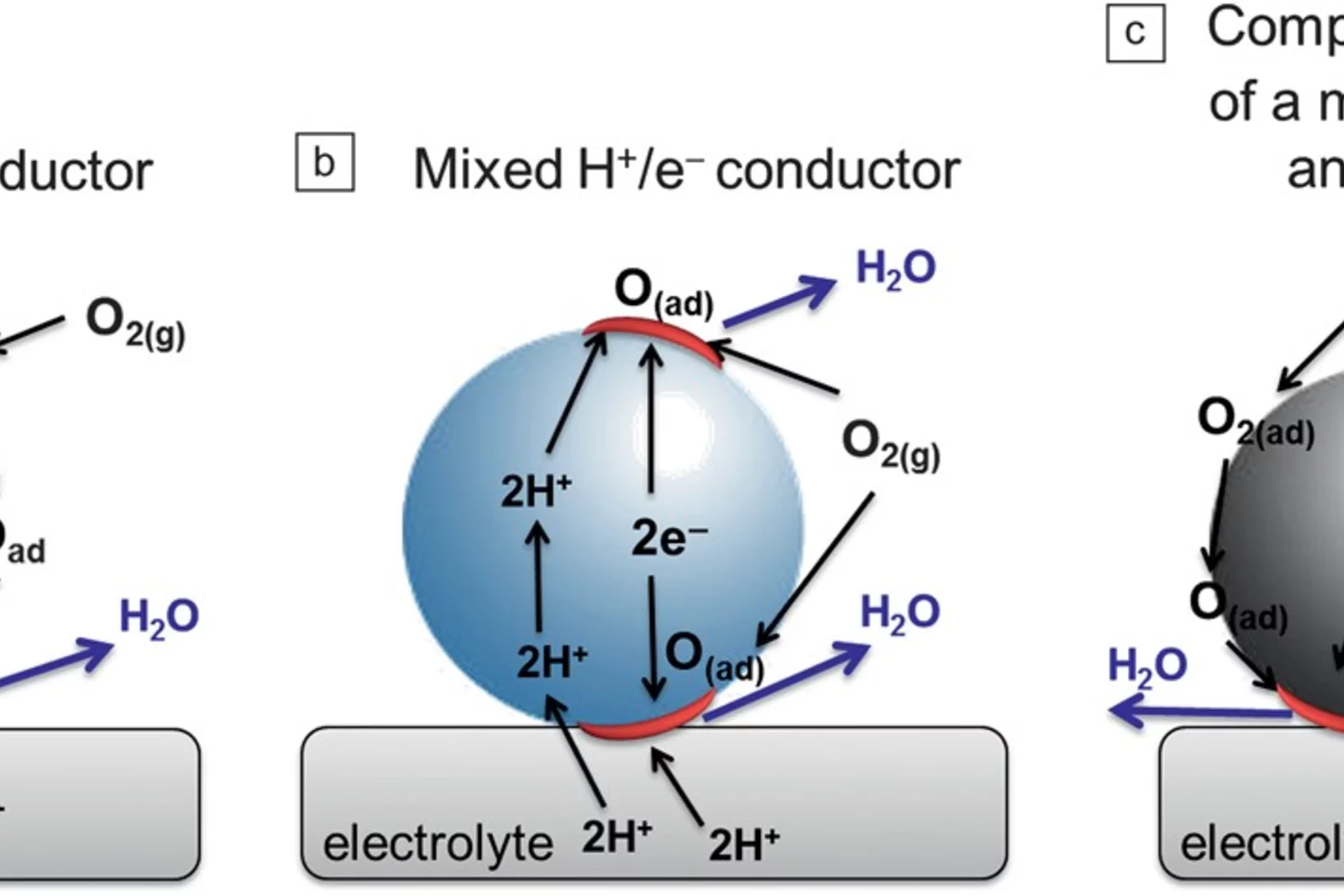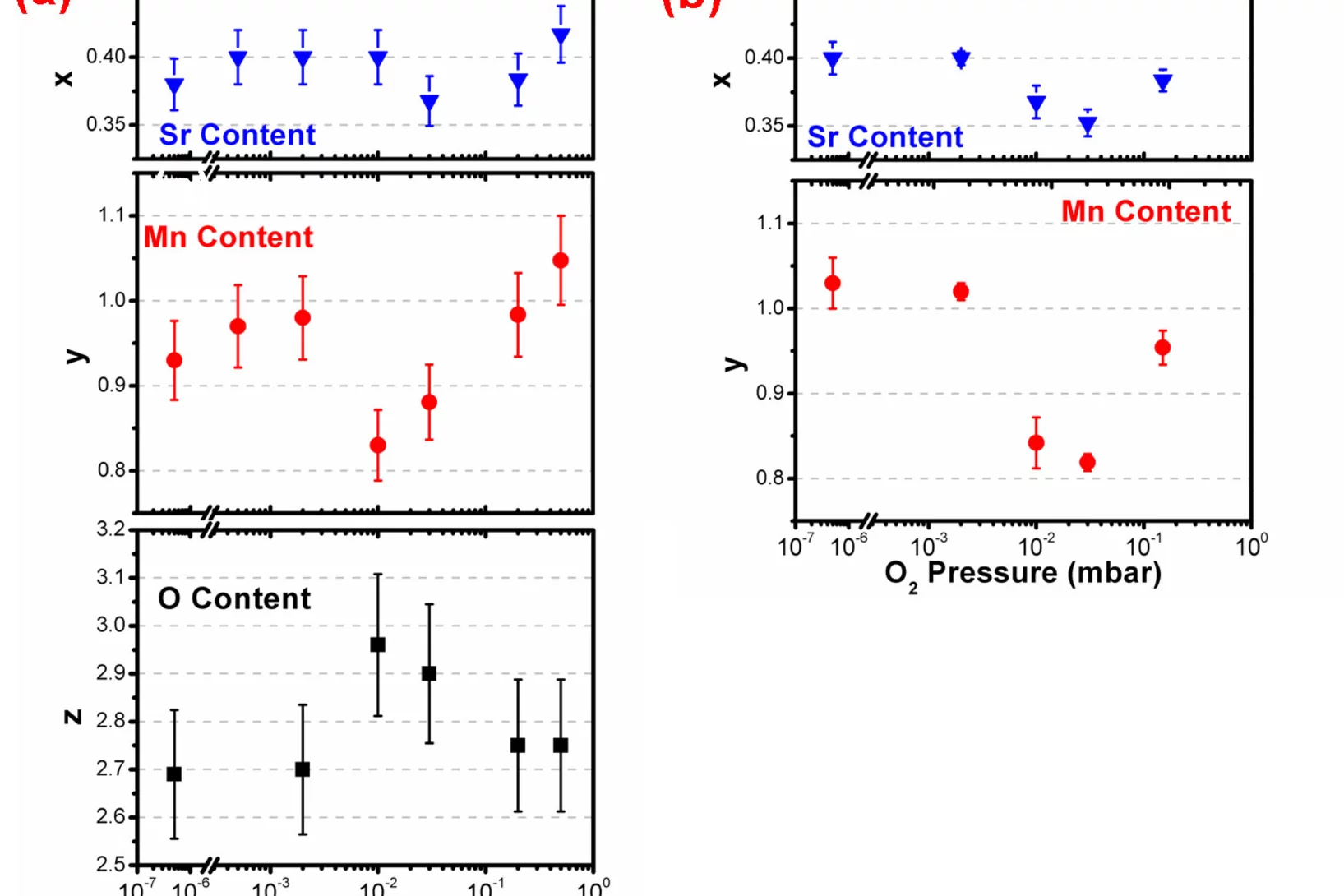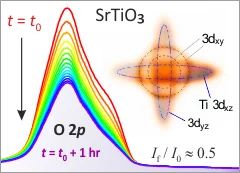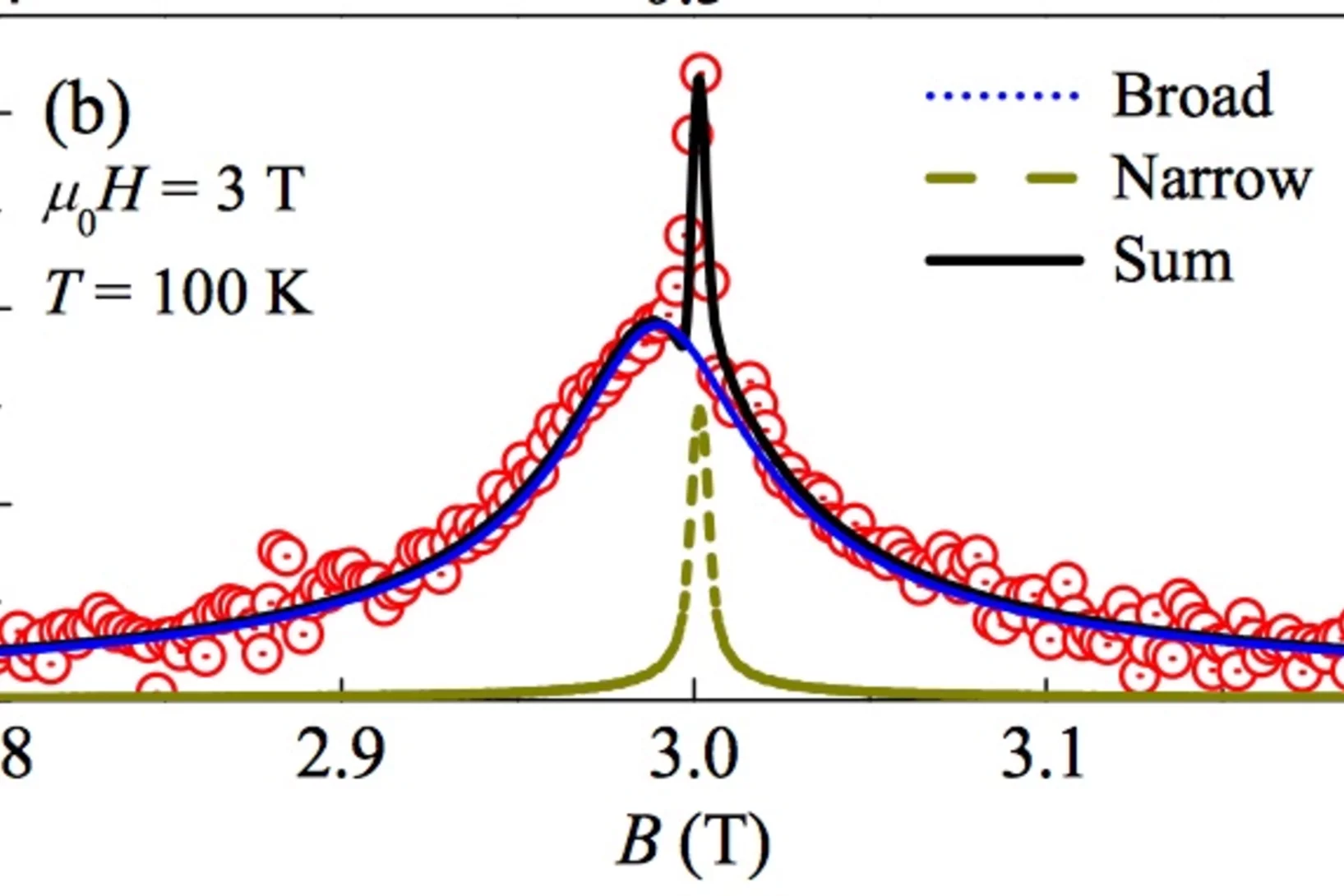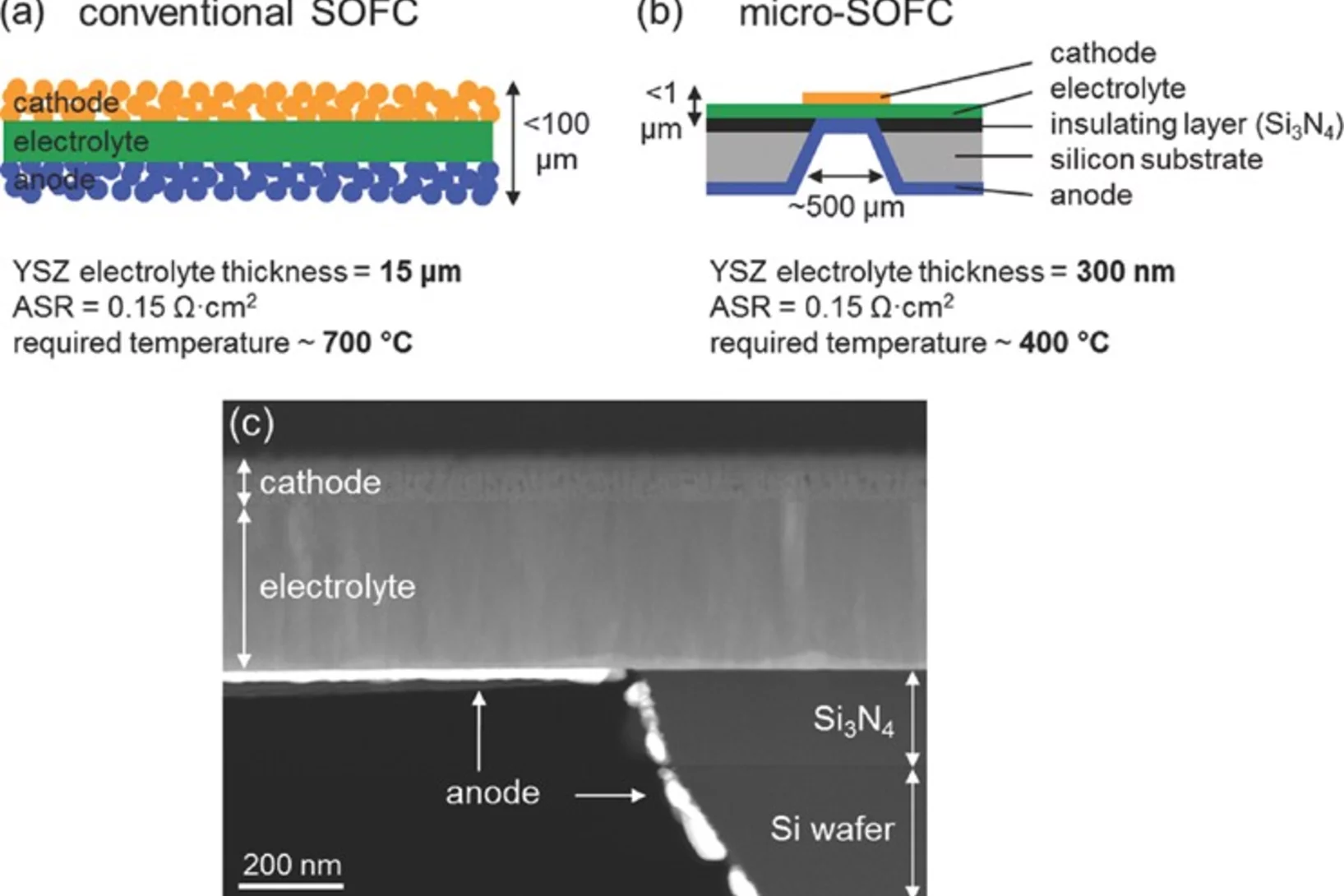Here you find current and previous news from the PSI Center for Neutron and Muon Sciences.
Structural and Magnetic Phase Transitions near Optimal Superconductivity in BaFe2(As1-xPx)2
We use nuclear magnetic resonance (NMR), high-resolution x-ray, and neutron scattering studies to study structural and magnetic phase transitions in phosphorus-doped BaFe2(As1-xPx)2. Previous transport, NMR, specific heat, and magnetic penetration depth measurements have provided compelling evidence for the presence of a quantum critical point (QCP) near optimal superconductivity at x=0.3.
Mass Density and Water Content of Saturated Never-Dried Calcium Silicate Hydrates
Calcium silicate hydrates (C-S-H) are the most abundant hydration products in ordinary Portland cement paste. Yet, despite the critical role they play in determining mechanical and transport properties, there is still a debate about their density and exact composition. Here, the site-specific mass density and composition of C-S-H in hydrated cement paste are determined with nanoscale resolution in a nondestructive approach.
Magnetic inhomogeneity on a triangular lattice: the magnetic-exchange versus the elastic energy and the role of disorder
Inhomogeneity in the ground state is an intriguing, emergent phenomenon in magnetism. Recently, it has been observed in the magnetostructural channel of the geometrically frustrated α-NaMnO2, for the first time in the absence of active charge degrees of freedom. Here we report an in-depth numerical and local-probe experimental study of the isostructural sister compound CuMnO2 that emphasizes and provides an explanation for the crucial differences between the two systems.
Interfacial dominated ferromagnetism in nanograined ZnO: a μSR and DFT study
Diamagnetic oxides can, under certain conditions, become ferromagnetic at room temperature and therefore are promising candidates for future material in spintronic devices. Contrary to early predictions, doping ZnO with uniformly distributed magnetic ions is not essential to obtain ferromagnetic samples. Instead, the nanostructure seems to play the key role, as room temperature ferromagnetism was also found in nanograined, undoped ZnO.
Non-Fermi Liquid Behavior Close to a Quantum Critical Point in a Ferromagnetic State without Local Moments
A quantum critical point (QCP) occurs upon chemical doping of the weak itinerant ferromagnet Sc3.1In. Remarkable for a system with no local moments, the QCP is accompanied by non-Fermi liquid behavior, manifested in the logarithmic divergence of the specific heat both in the ferro-and the paramagnetic states, as well as linear temperature dependence of the low-temperature resistivity.
Surface Aligned Magnetic Moments and Hysteresis of an Endohedral Single-Molecule Magnet on a Metal
The interaction between the endohedral unit in the single-molecule magnet Dy2ScN@C80 and a rhodium (111) substrate leads to alignment of the Dy 4f orbitals. The resulting orientation of the Dy2ScN plane parallel to the surface is inferred from comparison of the angular anisotropy of x-ray absorption spectra and multiplet calculations in the corresponding ligand field.
Muonium in Stishovite: Implications for the Possible Existence of Neutral Atomic Hydrogen in the Earth's Deep Mantle
Hydrogen in the Earth's deep interior has been thought to exist as a hydroxyl group in high-pressure minerals. We present Muon Spin Rotation experiments on SiO2 stishovite, which is an archetypal high-pressure mineral. Positive muon (which can be considered as a light isotope of proton) implanted in stishovite was found to capture electron to form muonium (corresponding to neutral hydrogen).
Magnetic inhomogeneity on a triangular lattice: the magnetic-exchange versus the elastic energy and the role of disorder
Inhomogeneity in the ground state is an intriguing, emergent phenomenon in magnetism. Recently, it has been observed in the magnetostructural channel of the geometrically frustrated α-NaMnO2, for the first time in the absence of active charge degrees of freedom. Here we report an in-depth numerical and local-probe experimental study of the isostructural sister compound CuMnO2 that emphasizes and provides an explanation for the crucial differences between the two systems.
Pressure dependence of the magnetic order in CrAs
L. Keller et al., Phys. Rev. B 91, 020409(R) (2015). The suppression of magnetic order with pressure concomitant with the appearance of pressure-induced superconductivity was recently discovered in CrAs. Here we present a neutron diffraction study of the pressure evolution of the helimagnetic ground state towards and in the vicinity of the superconducting phase. Neutron diffraction on polycrystalline CrAs was employed from zero pressure to 0.65 GPa and at various temperatures.
The phase diagram of electron-doped La2-xCexCuO4-δ
Superconductivity is a striking example of a quantum phenomenon in which electrons move coherently over macroscopic distances without scattering. The high-temperature superconducting oxides (cuprates) are the most studied class of superconductors, composed of two-dimensional CuO2 planes separated by other layers that control the electron concentration in the planes. A key unresolved issue in cuprates is the relationship between superconductivity and magnetism.
Competing superconducting and magnetic order parameters and field-induced magnetism in electron-doped Ba(Fe1-xCox)2As2
We have studied the magnetic and superconducting properties of Ba(Fe0.95Co0.05)2As2 as a function of temperature and external magnetic field using neutron scattering and muon spin rotation. Below the superconducting transition temperature the magnetic and superconducting order parameters coexist and compete. A magnetic field can significantly enhance the magnetic scattering in the superconducting state, roughly doubling the Bragg intensity at 13.5T.
Anisotropic Local Modification of Crystal Field Levels in Pr-Based Pyrochlores: A Muon-Induced Effect Modeled Using Density Functional Theory
Although muon spin relaxation is commonly used to probe local magnetic order, spin freezing, and spin dynamics, we identify an experimental situation in which the measured response is dominated by an effect resulting from the muon-induced local distortion rather than the intrinsic behavior of the host compound.
Coexistence of 3d-Ferromagnetism and Superconductivity in [(Li1-Fex)OH](Fe1-yLiy)Se
Superconducting [(Li1-xFex)OH](Fe1-yLiy)Se (x≈0.2, y≈0.08) was synthesized by hydrothermal methods and characterized by single-crystal and powder X-ray diffrac- tion. The structure contains alternating layers of anti-PbO type (Fe1-yLiy)Se and (Li1-xFex)OH. Electrical resistivity and magnetic susceptibility measurements reveal superconductivity at 43K.
Fractional excitations in the square-lattice quantum antiferromagnet
Quantum magnets have occupied the fertile ground between many-body theory and low-temperature experiments on real materials since the early days of quantum mechanics. However, our understanding of even deceptively simple systems of interacting spin-1/2 particles is far from complete. The quantum square-lattice Heisenberg antiferromagnet, for example, exhibits a striking anomaly of hitherto unknown origin in its magnetic excitation spectrum.
A measurement of the neutron to 199Hg magnetic moment ratio
The neutron gyromagnetic ratio has been measured relative to that of the 199Hg atom with an uncertainty of 0.8 ppm. We employed an apparatus where ultracold neutrons and mercury atoms are stored in the same volume and report the result γn/γHg = 3.8424574(30).
Short-Range Correlations in the Magnetic Ground State of Na4Ir3O8
The magnetic ground state of the Jeff = 1/2 hyperkagome lattice in Na4Ir3O8 is explored via combined bulk magnetization, muon spin relaxation, and neutron scattering measurements. A short-range, frozen state comprised of quasistatic moments develops below a characteristic temperature of TF = 6K, revealing an inhomogeneous distribution of spins occupying the entirety of the sample volume. Quasistatic, short- range spin correlations persist until at least 20 mK and differ substantially from the nominally dynamic response of a quantum spin liquid. Our data demonstrate that an inhomogeneous magnetic ground state arises in Na4Ir3O8 driven either by disorder inherent to the creation of the hyperkagome lattice itself or stabilized via quantum fluctuations.
Measurement of the parameter ξ″ in polarized muon decay and implications on exotic couplings of the leptonic weak interaction
The muon decay parameter ξ″ has been determined in a measurement of the longitudinal polarization of positrons emitted from polarized and depolarized muons. The result, ξ″ = 0.981 ± 0.045stat ± 0.003syst, is consistent with the Standard Model prediction of unity, and provides an order of magnitude improvement in the relative precision of this parameter. This value sets new constraints on exotic couplings beyond the dominant V-A description of the leptonic weak interaction.
k=0 Magnetic Structure and Absence of Ferroelectricity in SmFeO3
SmFeO3 has attracted considerable attention very recently due to its reported multiferroic properties above room temperature. We have performed powder and single crystal neutron diffraction as well as complementary polarization dependent soft X-ray absorption spectroscopy measurements on floating-zone grown SmFeO3 single crystals in order to determine its magnetic structure. We found a k=0 G-type collinear antiferromagnetic structure that is not compatible with inverse Dzyaloshinskii-Moriya interaction driven ferroelectricity. While the structural data reveal a clear sign for magneto-elastic coupling at the Néel-temperature of ∼675 K, the dielectric measurements remain silent as far as ferroelectricity is concerned.
A high-pressure hydrogen time projection chamber for the MuCap experiment
The MuCap experiment at the Paul Scherrer Institute performed a high-precision measurement of the rate of the basic electroweak process of nuclear muon capture by the proton, μ- + p → n + νμ. The experimental approach was based on the use of a time projection chamber (TPC) that operated in pure hydrogen gas at a pressure of 10 bar and functioned as an active muon stopping target. The TPC detected the tracks of individual muon arrivals in three dimensions, while the trajectories of outgoing decay (Michel) electrons were measured by two surrounding wire chambers and a plastic scintillation hodoscope.
Molecular Scale Dynamics of Large Ring Polymers
We present neutron scattering data on the structure and dynamics of melts from polyethylene oxide rings with molecular weights up to ten times the entanglement mass of the linear counterpart. The data reveal a very compact conformation displaying a structure approaching a mass fractal, as hypothesized by recent simulation work. The dynamics is characterized by a fast Rouse relaxation of subunits (loops) and a slower dynamics displaying a lattice animal-like loop displacement.
Multiferroic Properties of o−LuMnO3 Controlled by b-Axis Strain
Strain is a leading candidate for controlling magnetoelectric coupling in multiferroics. Here, we use x-ray diffraction to study the coupling between magnetic order and structural distortion in epitaxial films of the orthorhombic (o-) perovskite LuMnO3. An antiferromagnetic spin canting in the E-type magnetic structure is shown to be related to the ferroelectrically induced structural distortion and to a change in the magnetic propagation vector.
Direct Spectroscopic Observation of a Shallow Hydrogenlike Donor State in Insulating SrTiO3
We present a direct spectroscopic observation of a shallow hydrogenlike muonium state in SrTiO3 which confirms the theoretical prediction that interstitial hydrogen may act as a shallow donor in this material. The formation of this muonium state is temperature dependent and appears below ∼70 K. From the temperature dependence we estimate an activation energy of ∼50 meV in the bulk and ∼23 meV near the free surface. The field and directional dependence of the muonium precession frequencies further supports the shallow impurity state with a rare example of a fully anisotropic hyperfine tensor.
The μ → eγ decay in a systematic effective field
We implement a systematic effective field theory approach to the benchmark process μ → eγ, performing automated one-loop computations including dimension 6 operators and studying their anomalous dimensions. We obtain limits on Wilson coefficients of a relevant subset of lepton-flavour violating operators that contribute to the branching ratio μ → eγ at one-loop.
Electric-Field-Induced Skyrmion Distortion and Giant Lattice Rotation in the Magnetoelectric Insulator Cu2OSeO3
Discovering fundamentally new ways to manipulate magnetic spins is crucial for research into advanced technologies. Magnetic Skyrmions, which are topologically stable whirls of magnetic spins, are promising candidates for new device components since those found in metallic host materials can be manipulated using electric currents.
Controlling the near-surface superfluid density in under doped YBa2Cu3O6+x by photo-illumination
The interaction with light weakens the superconducting ground state in classical superconductors. The situation in cuprate superconductors is more complicated: illumination increases the charge carrier density, a photo-induced effect that persists below room temperature. Furthermore, systematic investigations in underdoped YBa2Cu3O6+x (YBCO) have shown an enhanced critical temperature Tc. Until now, studies of photo-persistent conductivity (PPC) have been limited to investigations of structural and transport properties, as well as the onset of superconductivity.
Low-temperature solid-oxide fuel cells based on proton-conducting electrolytes
The need for reducing the operating temperature of solid-oxide fuel cells (SOFCs) imposed by cost reduction has pushed significant progress in fundamental understanding of the individual components, as well as materials innovation and device engineering. Proton-conducting oxides have emerged as potential alternative electrolyte materials to oxygen-ion conducting oxides for operation at low and intermediate temperatures.
Plasma interactions determine the composition in pulsed laser deposited thin films
Plasma chemistry and scattering strongly affect the congruent, elemental transfer during pulsed laser deposition of target metal species in an oxygen atmosphere. Studying the plasma properties of La0.6Sr0.4MnO3, we demonstrate for as grown La0.6Sr0.4MnO3-δ films that a congruent transfer of metallic species is achieved in two pressure windows: ∼10−3 mbar and ∼2 × 10−1 mbar.
Mixed Dimensionality of Confined Conducting Electrons in the Surface Region of SrTiO3
Using angle-resolved photoemission spectroscopy, we show that the recently discovered surface state on SrTiO3 consists of nondegenerate t2g states with different dimensional characters.
Spin-lattice coupling induced weak dynamical magnetism in EuTiO3 at high temperatures
EuTiO3, which is a G-type antiferromagnet below TN = 5.5 K, has some fascinating properties at high temperatures, suggesting that macroscopically hidden dynamically fluctuating weak magnetism exists at high temperatures. This conjecture is substantiated by magnetic field dependent magnetization measurements, which exhibit pronounced anomalies below 200 K becoming more distinctive with increasing magnetic field strength. Additional results from muon spin rotation experiments provide evidence for weak fluctuating bulk magnetism induced by spin-lattice coupling which is strongly supported in increasing magnetic field.
Low-Temperature Micro-Solid Oxide Fuel Cells with Partially Amorphous La0.6Sr0.4CoO3-δ Cathodes
Partially amorphous La0.6Sr0.4CoO3-δ (LSC) thin-film cathodes are fabricated using pulsed laser deposition and are integrated in free-standing micro-solid oxide fuel cells (micro-SOFC) with a 3YSZ electrolyte and a Pt anode. A low degree of crystallinity of the LSC layers is achieved by taking advantage of the miniaturization of the cells, which permits low-temperature operation (300–450 °C).


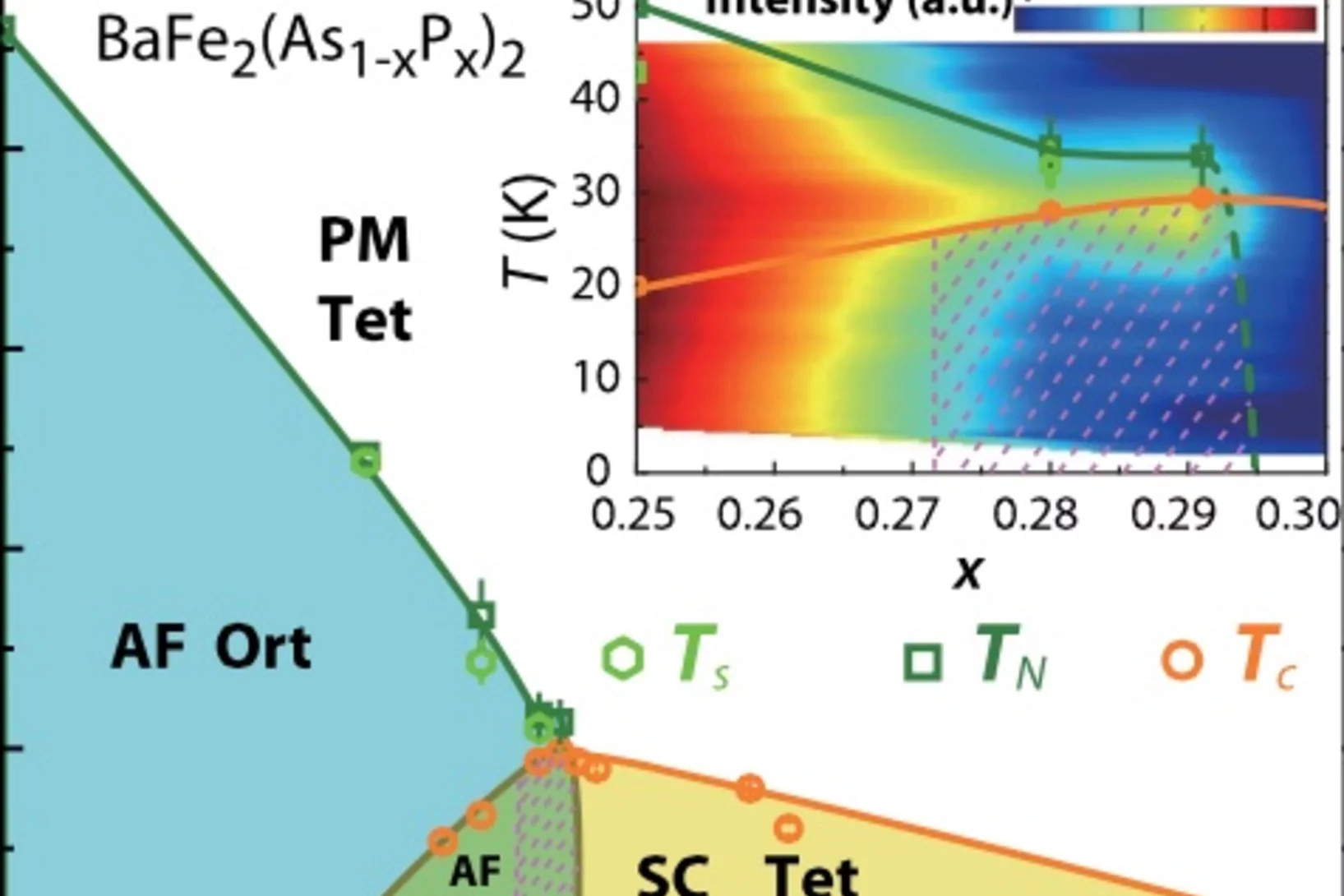
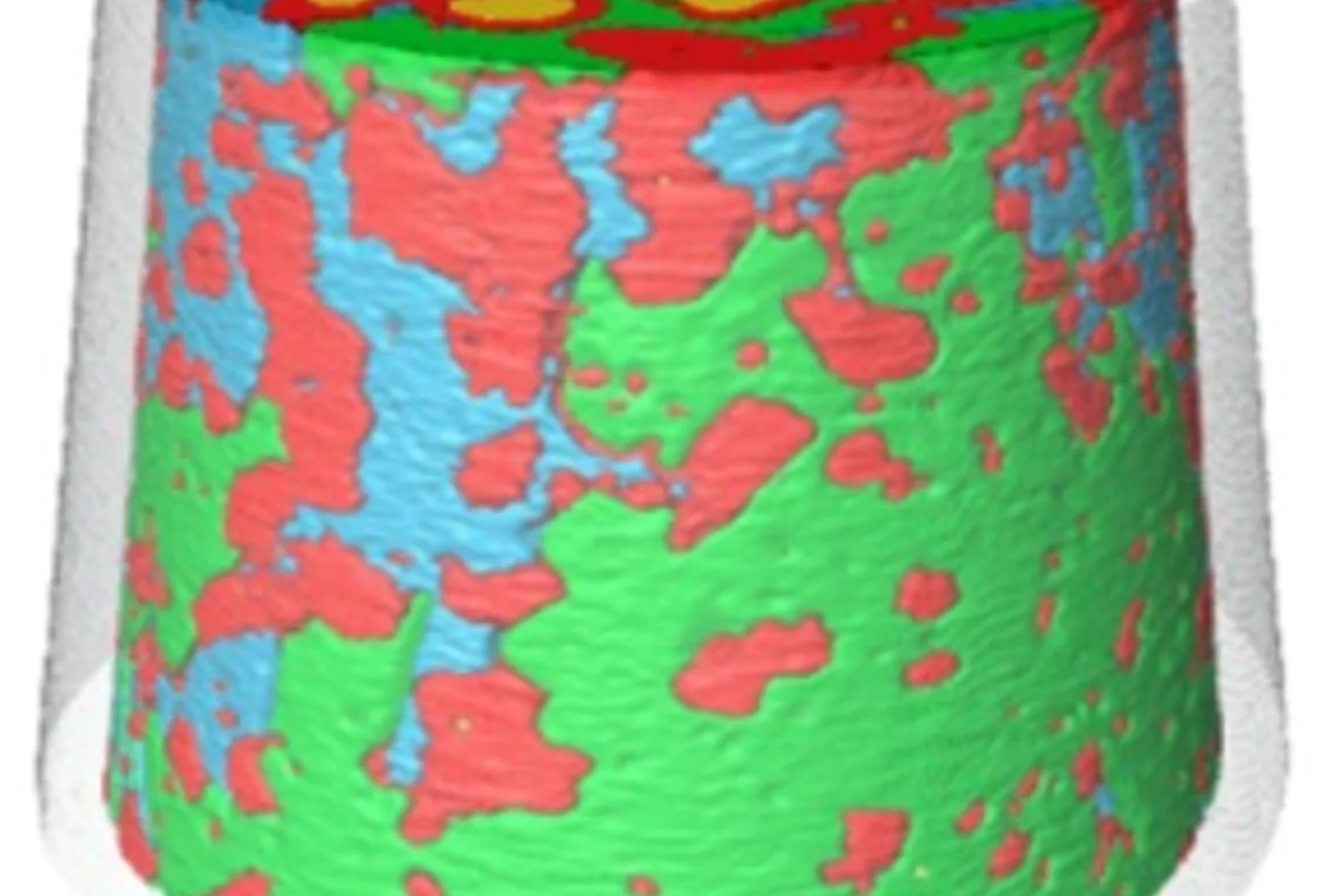
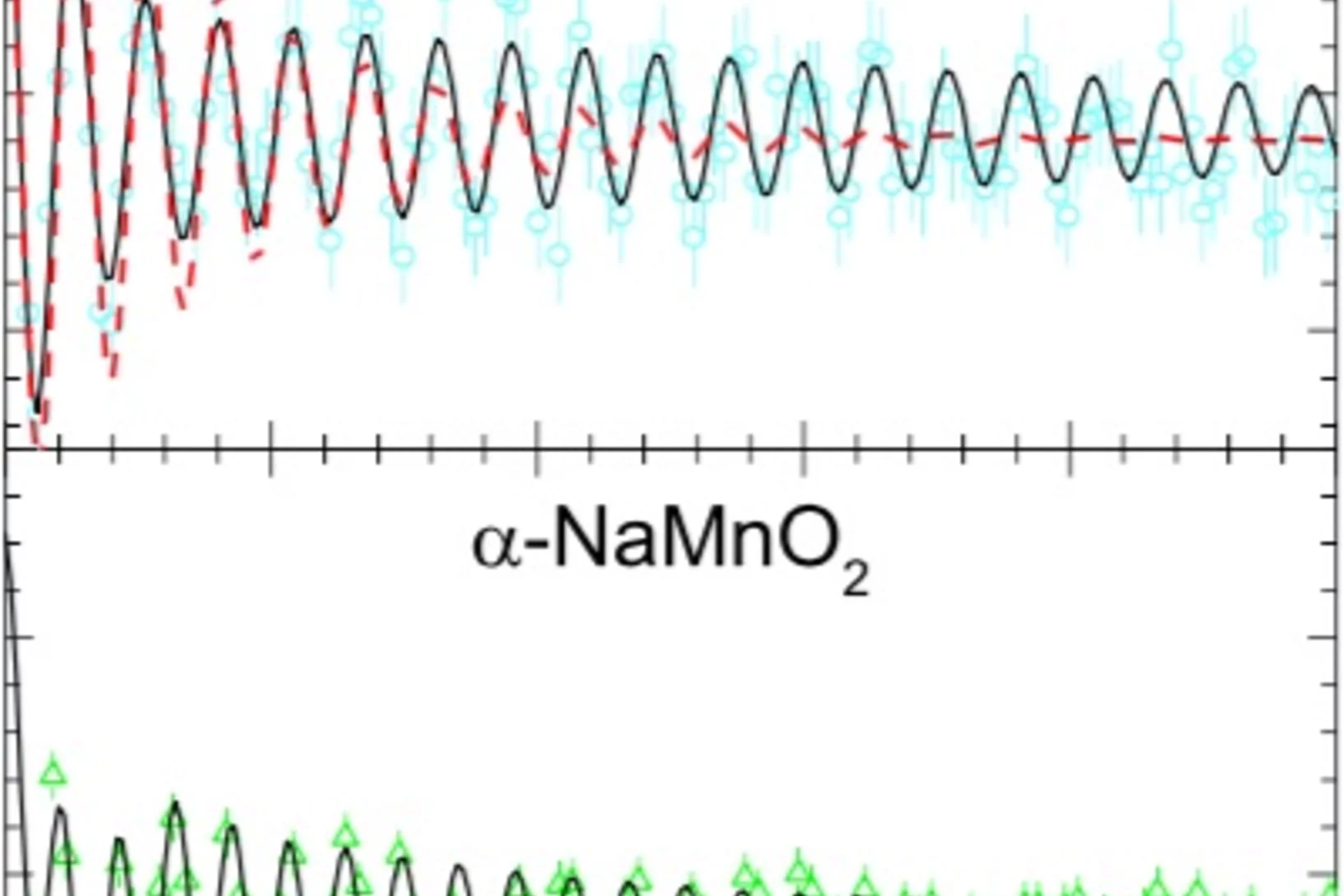
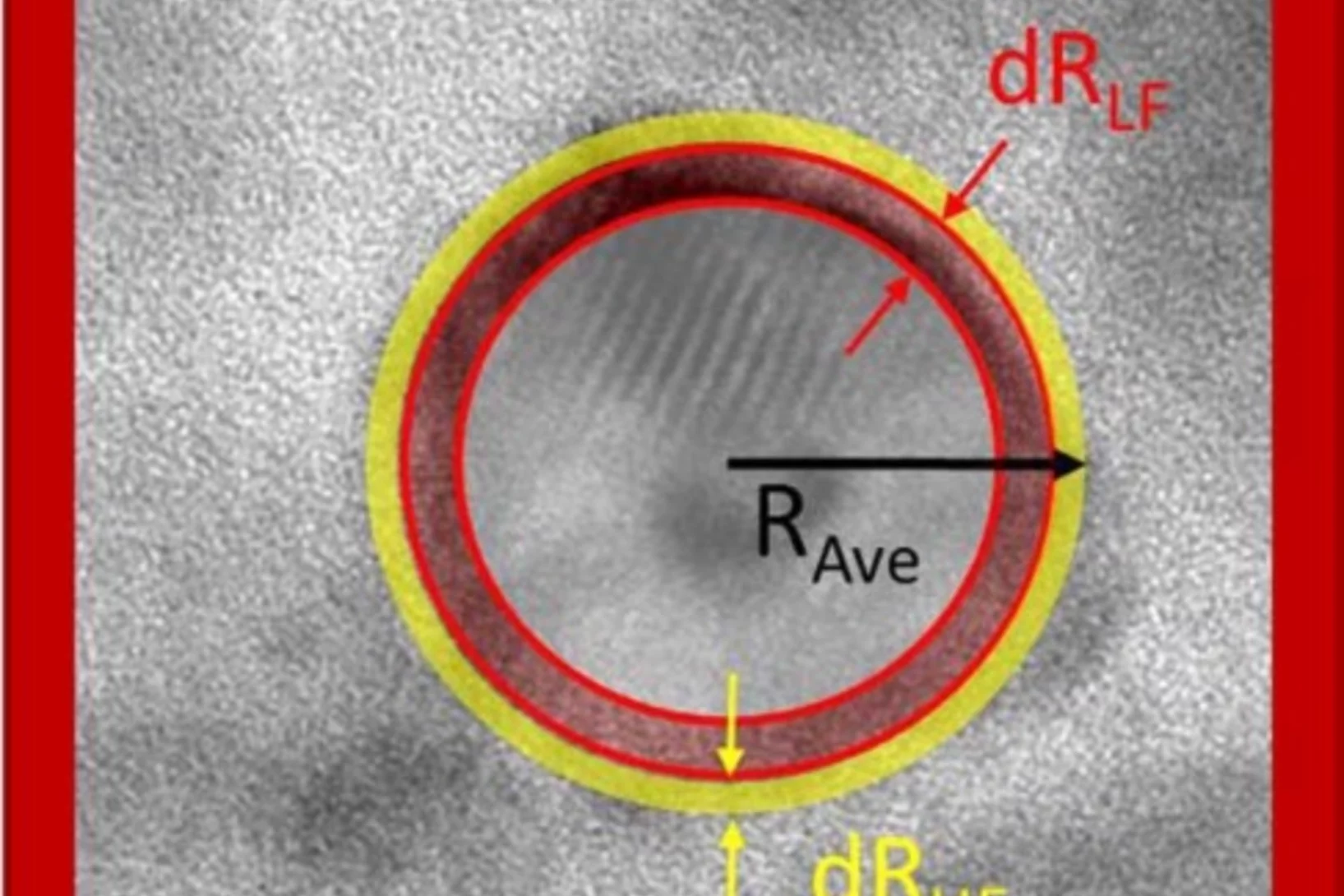
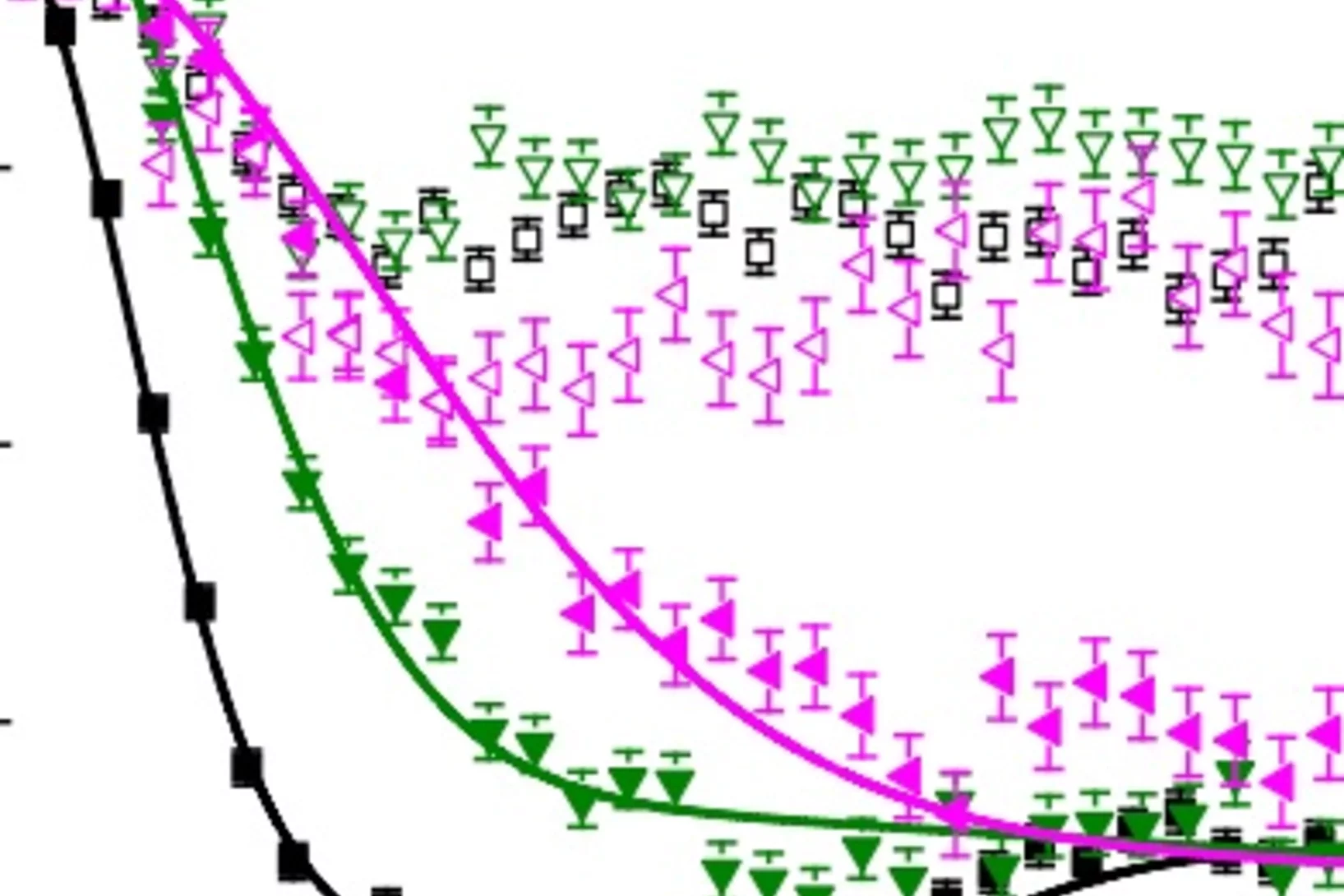
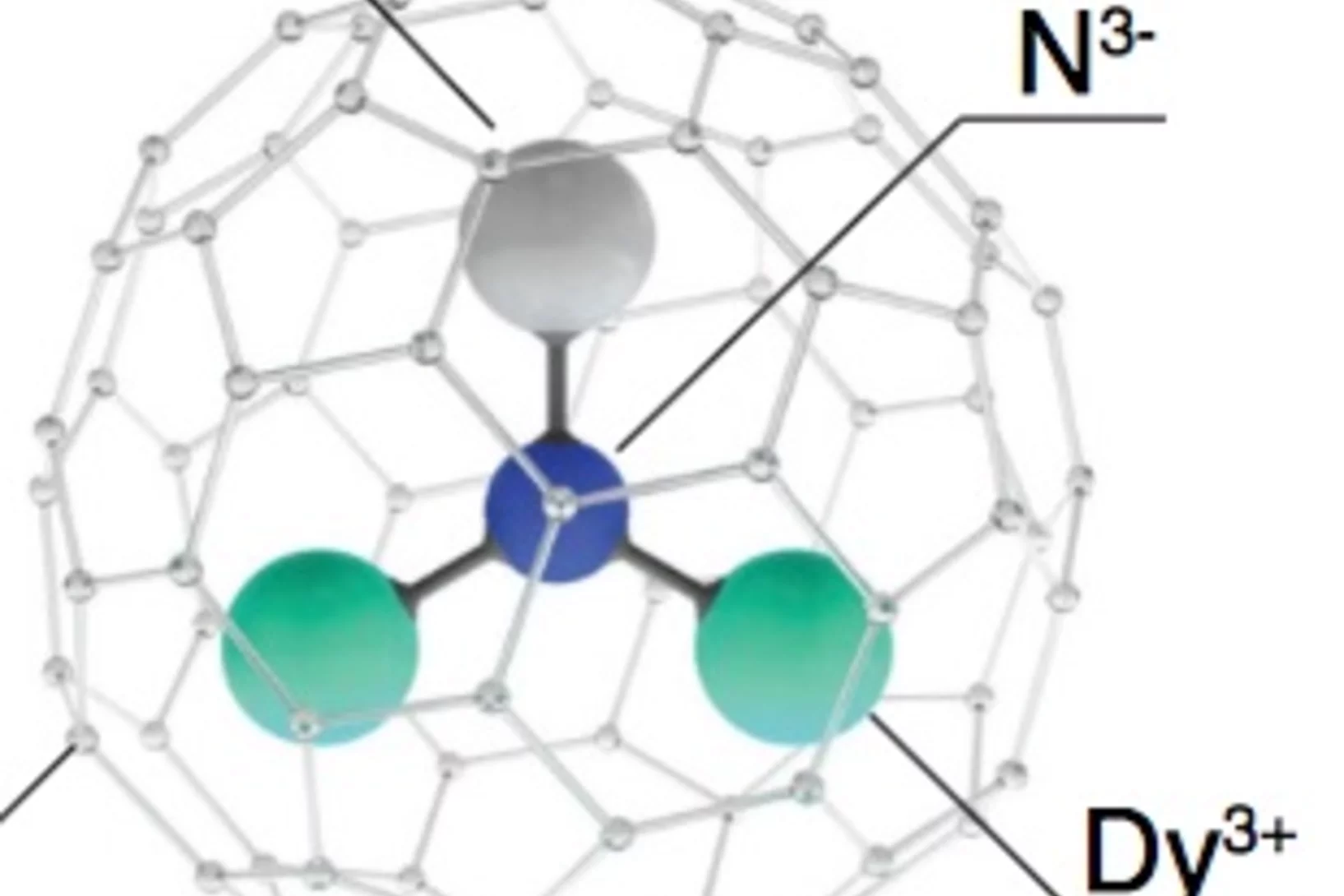


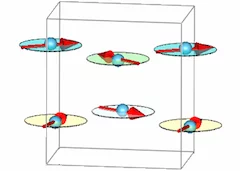
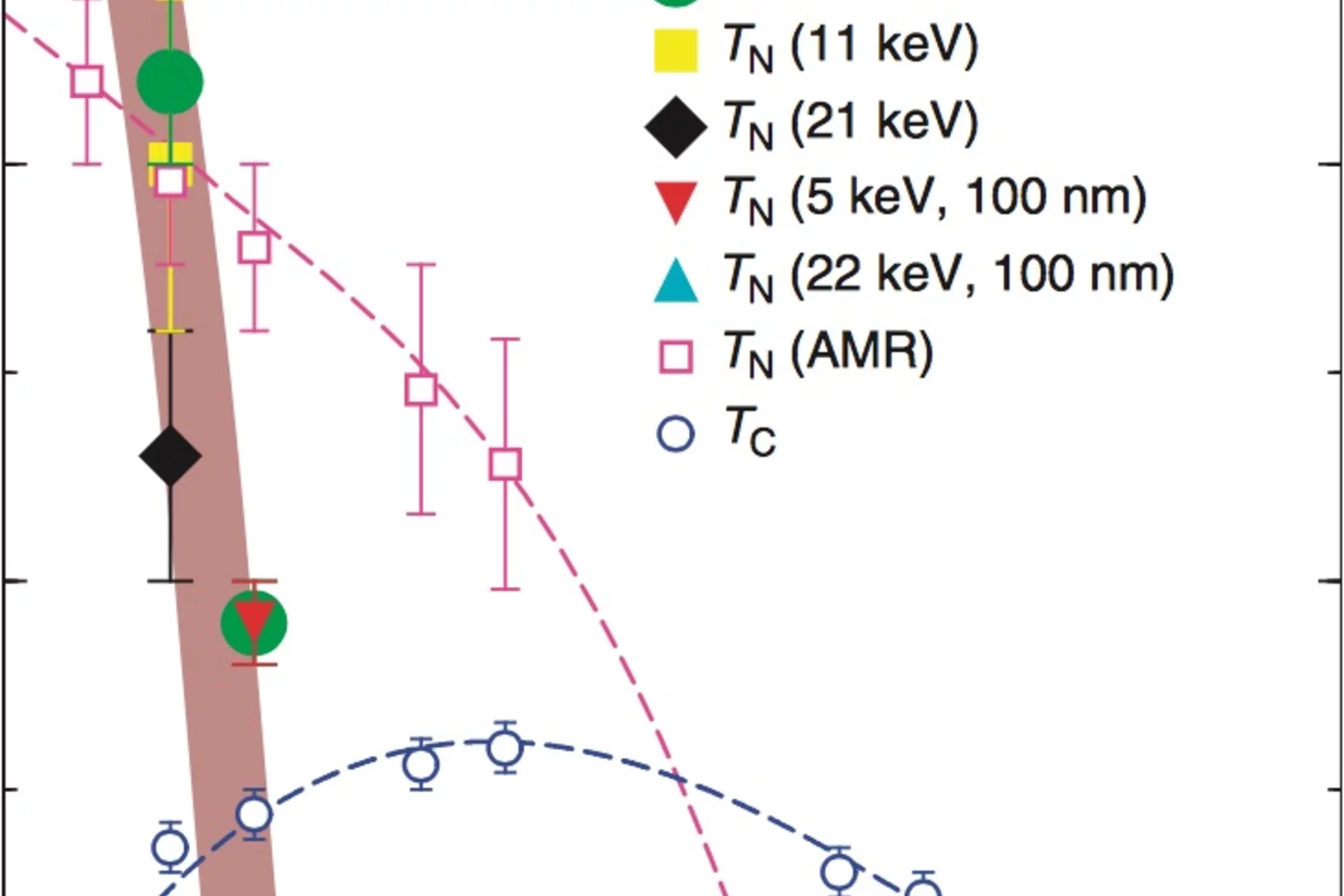
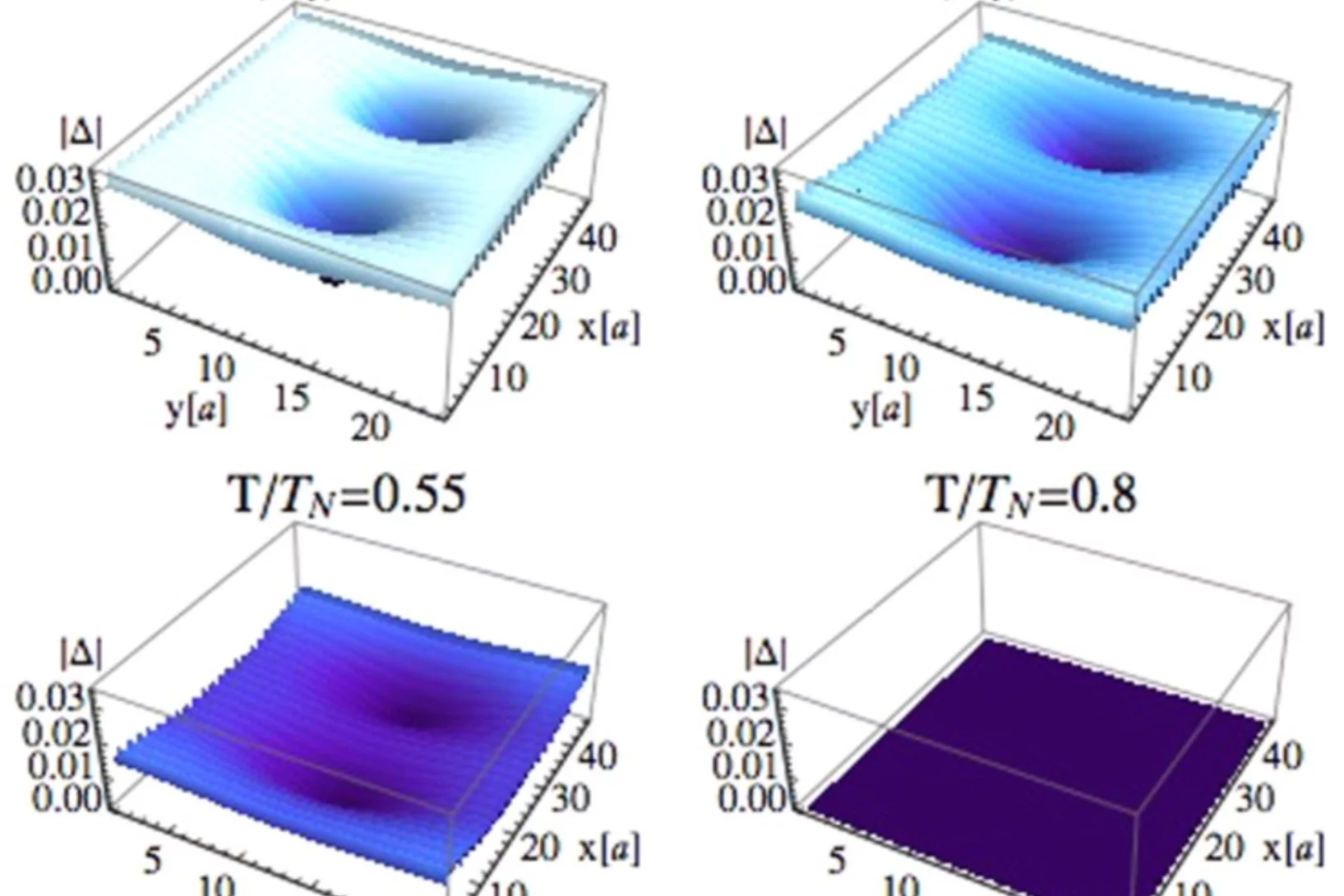
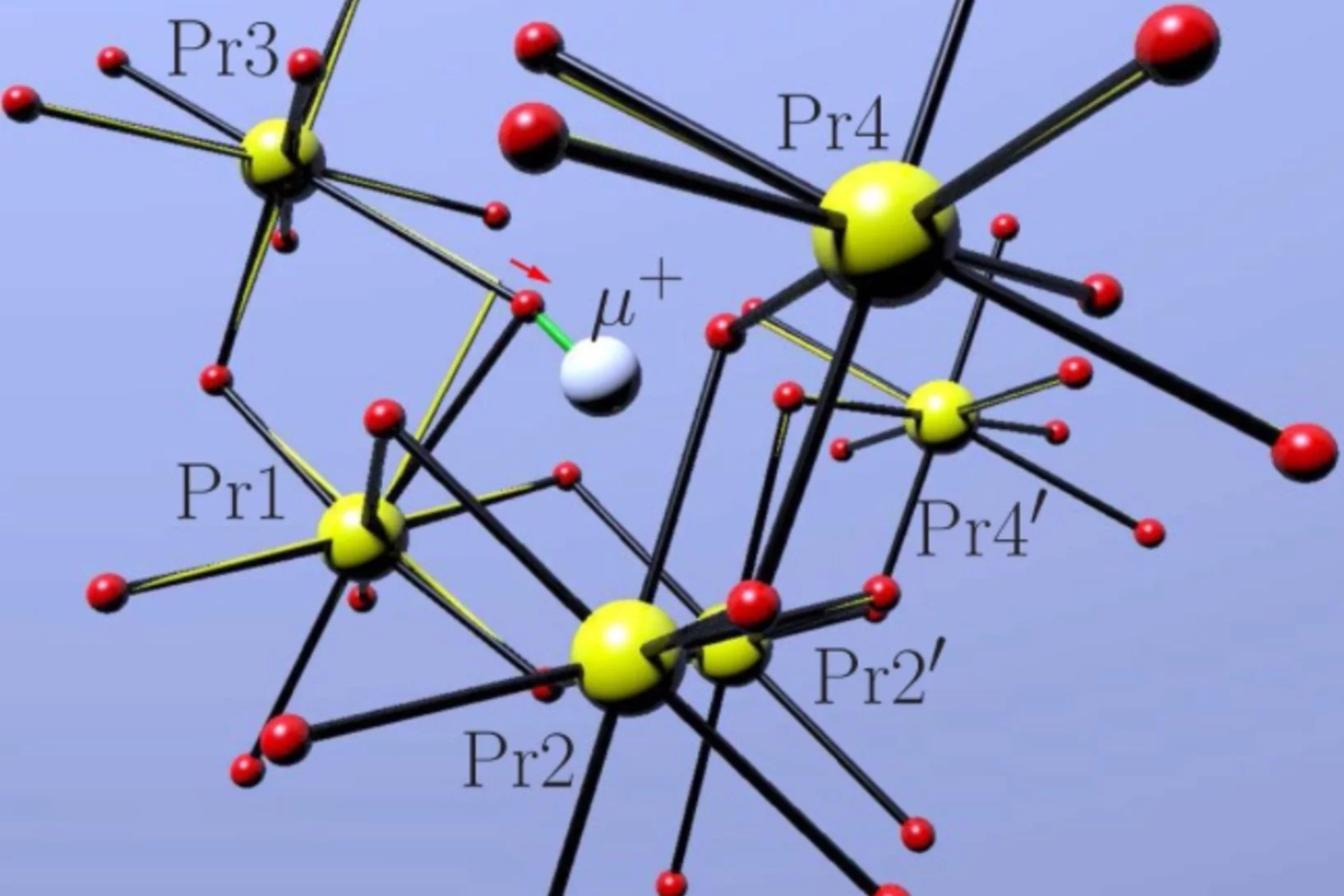
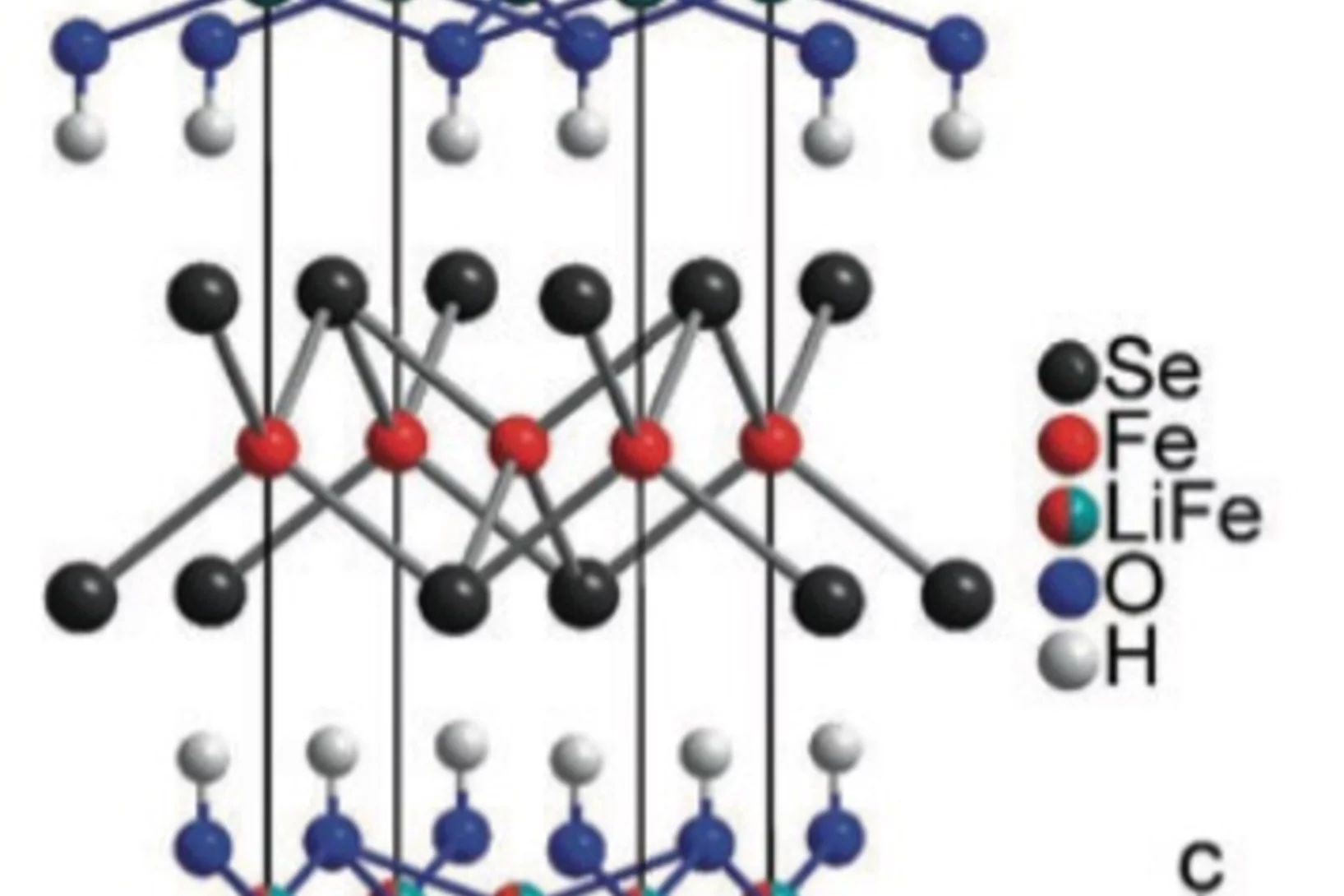
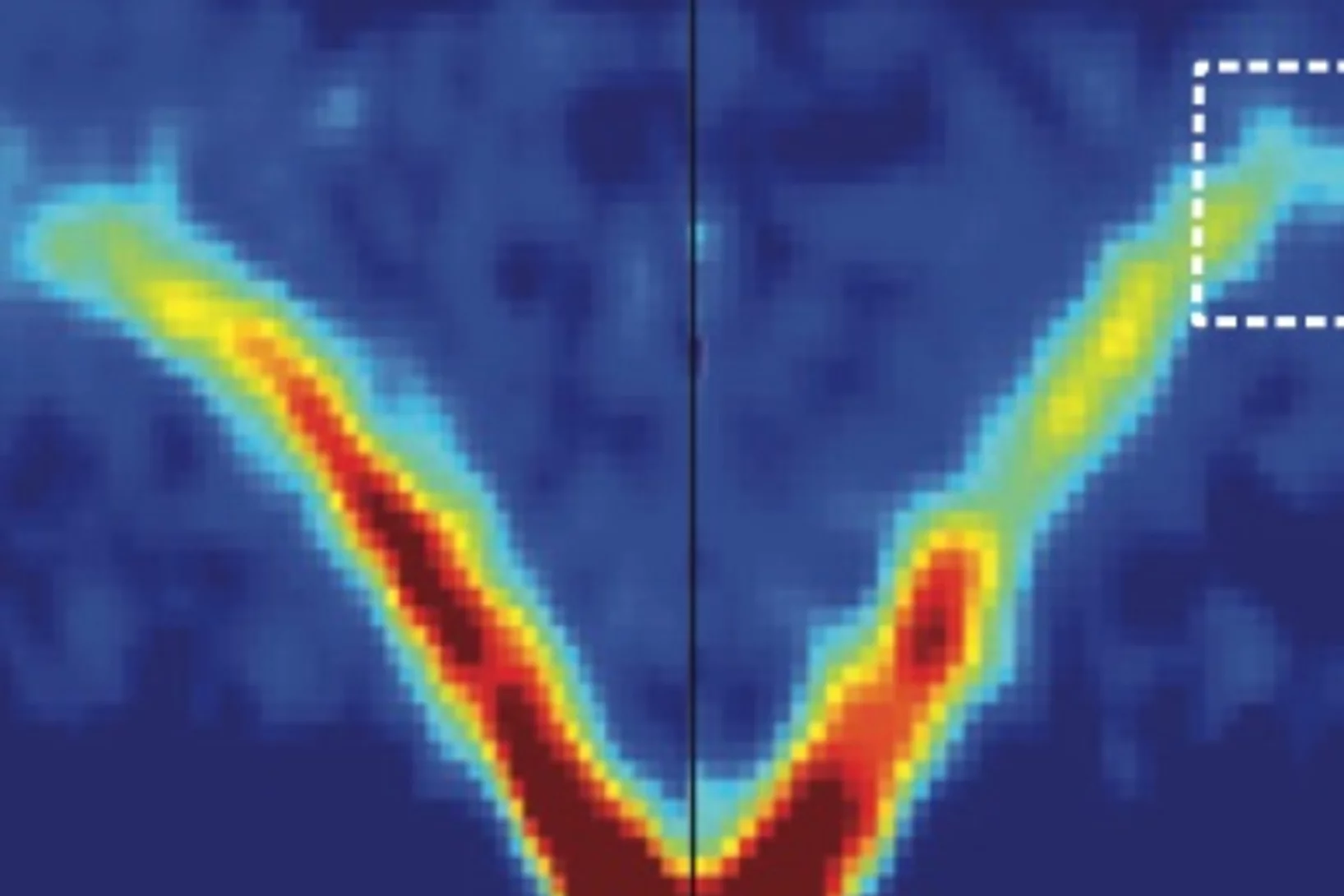
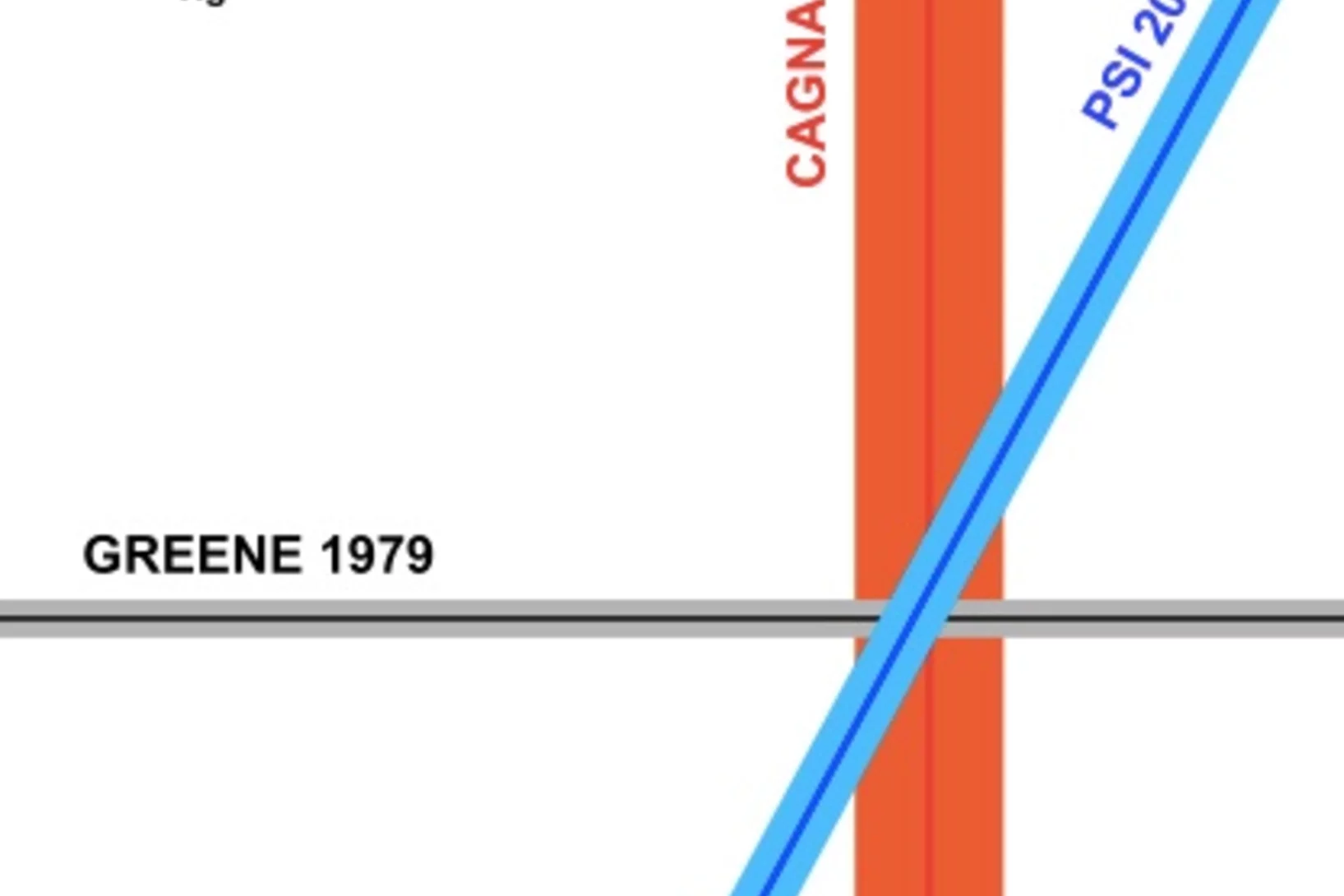
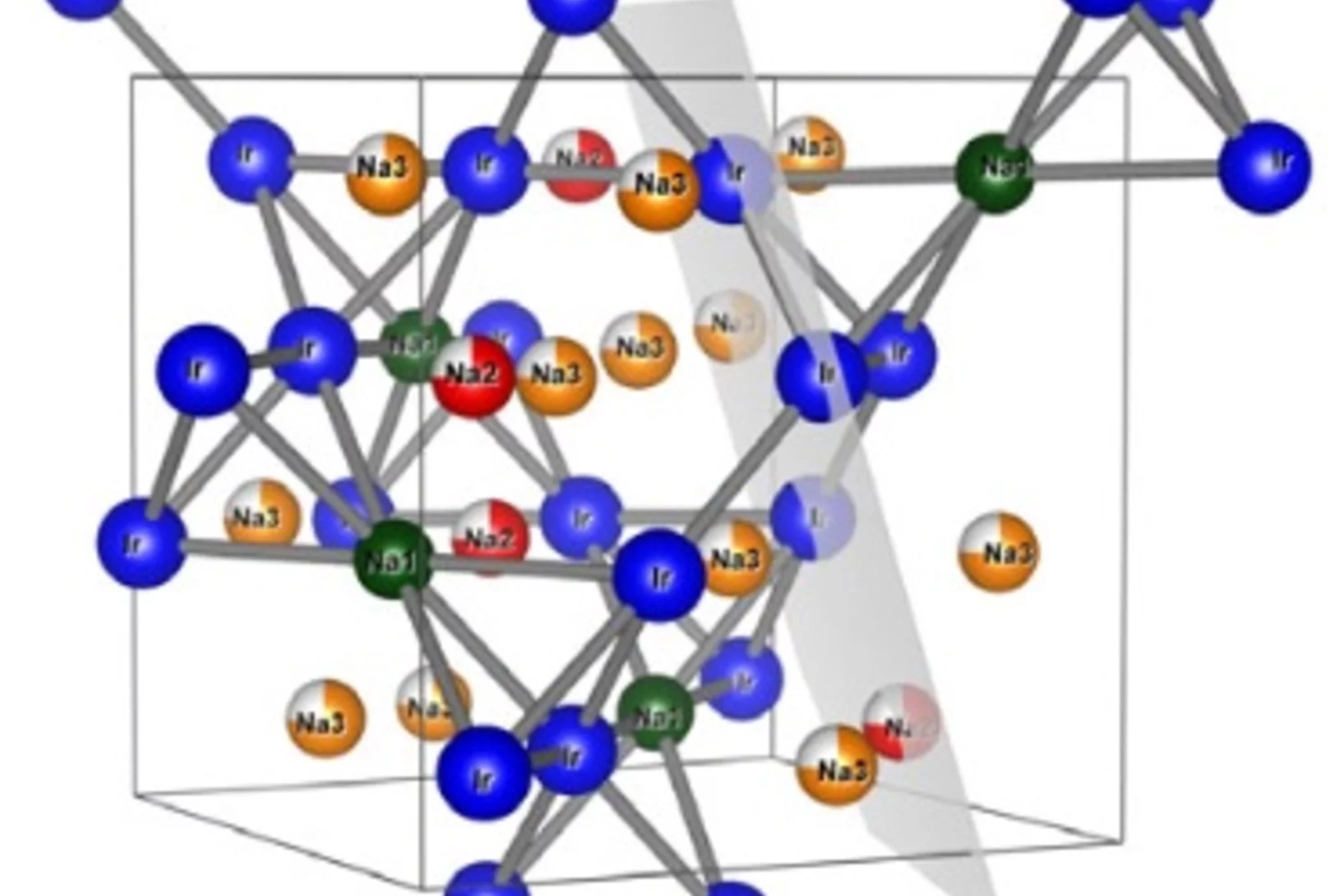
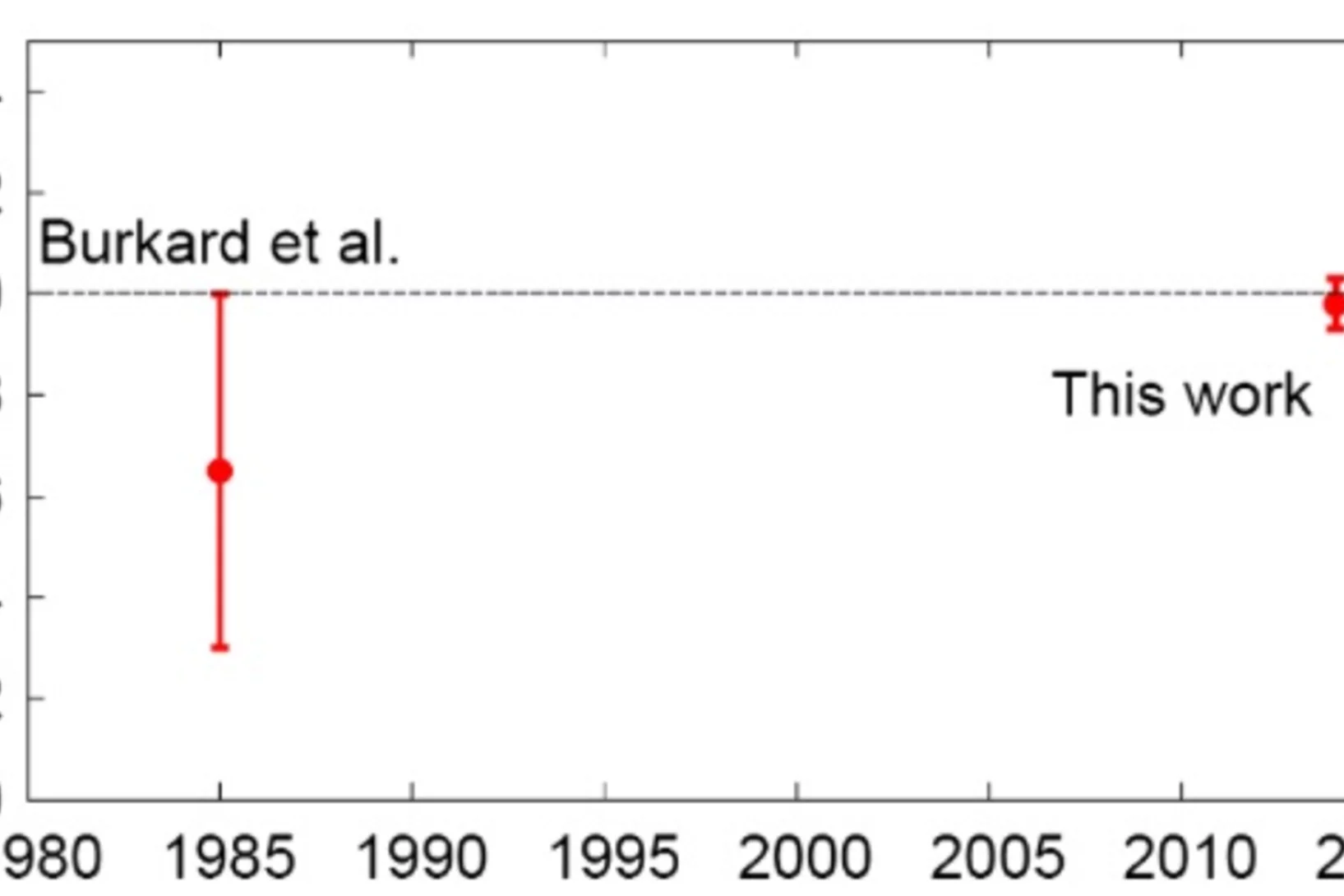
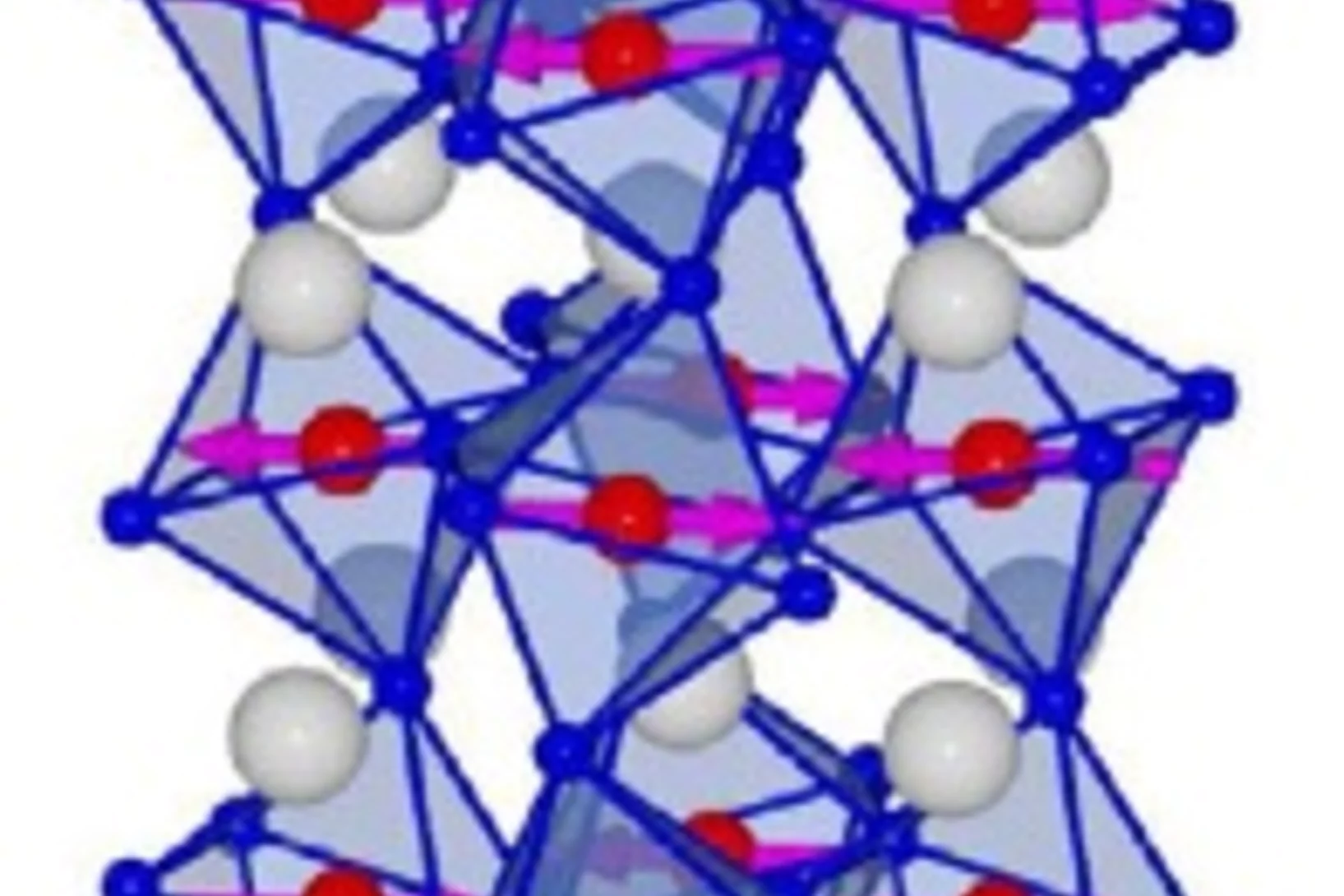
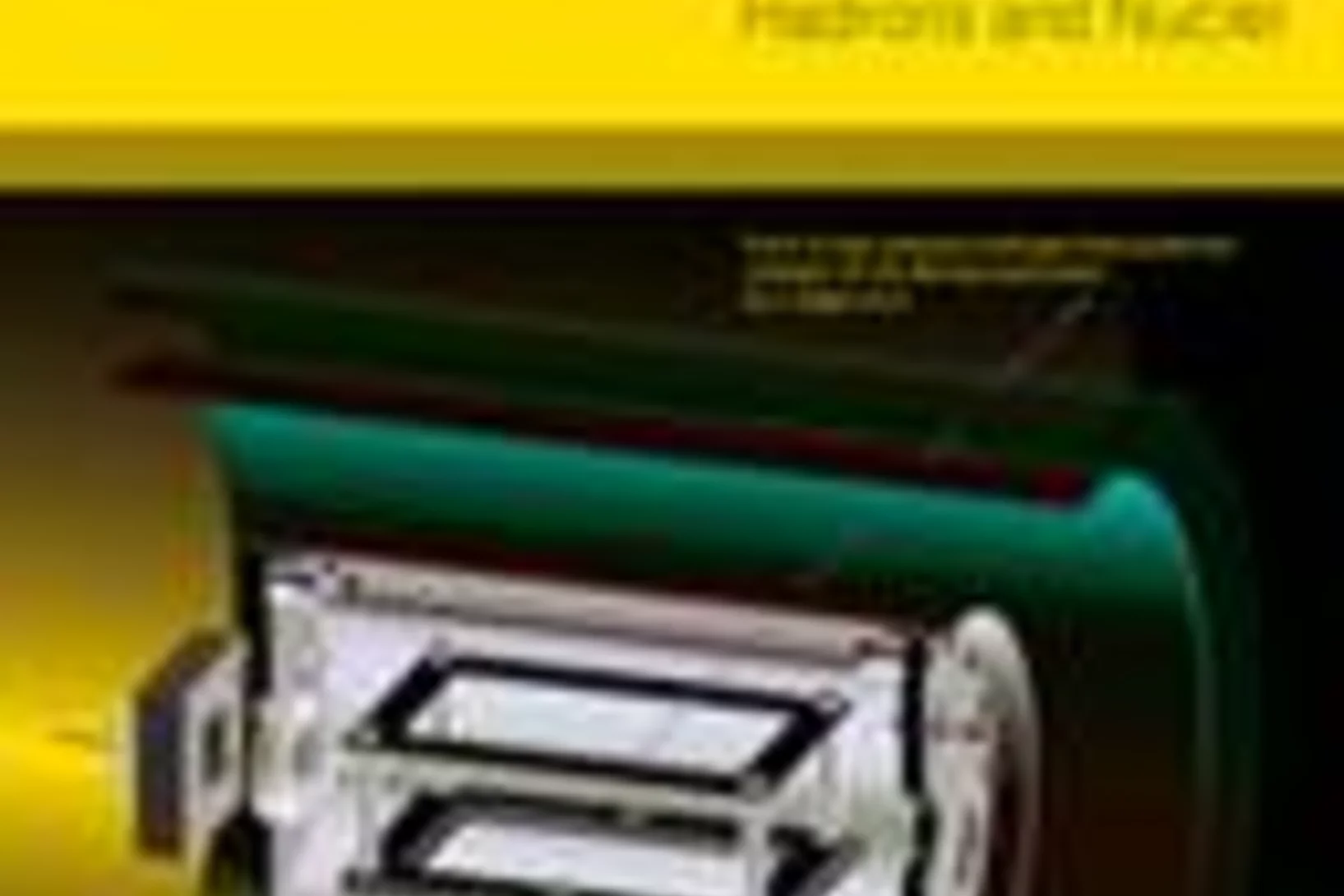
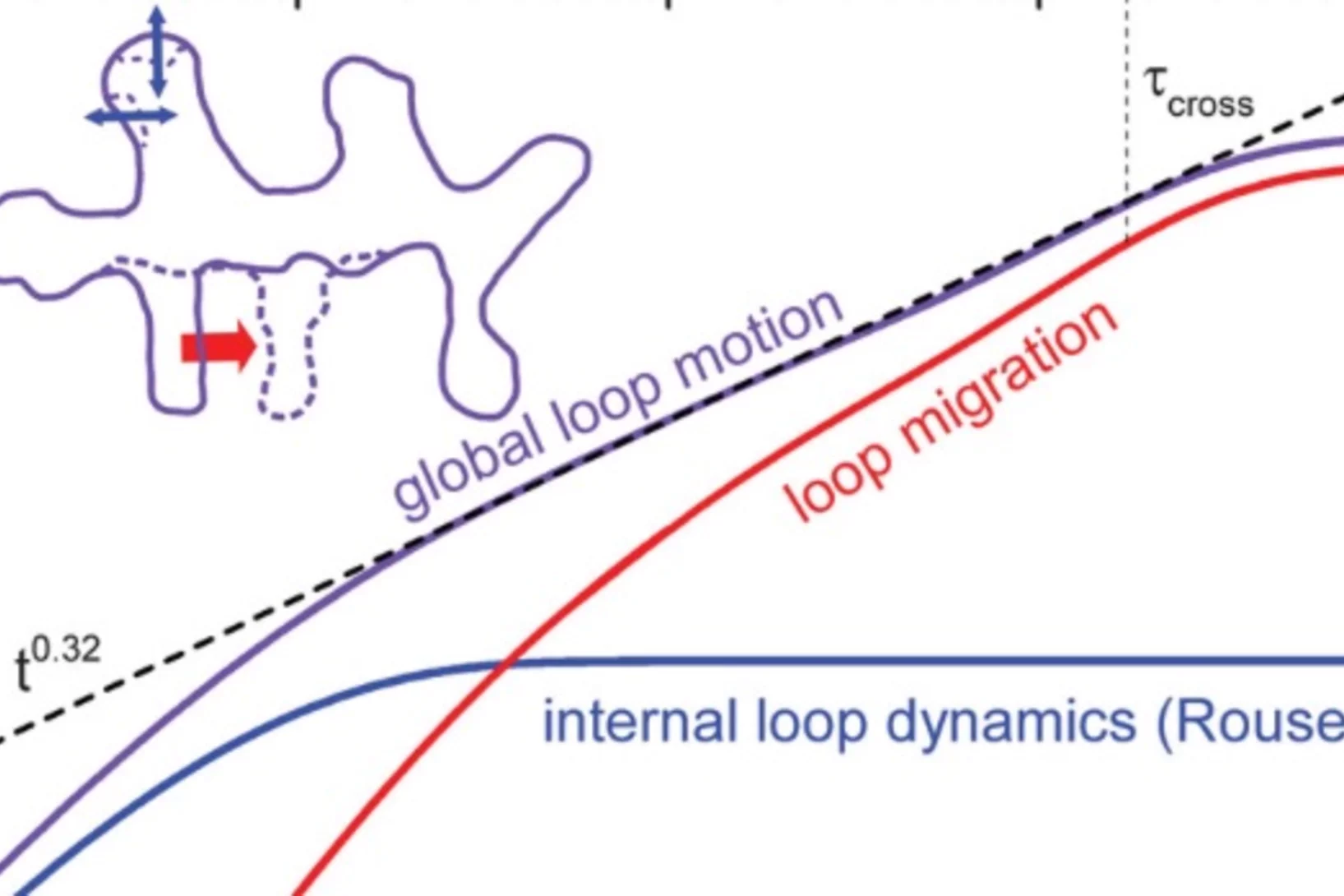
![Temperature dependence of the (050) reflection from a 200 nm o−LuMnO3 [110]-oriented film. Inset (a): Temperature dependence of the integrated intensity from the (050) structural reflection (black) and the (0qb≈½0) magnetic reflection (red) of this film. Inset (b): The simplest approximation for a distortion producing nonzero intensity for a (0k0) reflection with k odd, depicted for two atoms along the b direction.](/sites/default/files/styles/teaser_grid_3_2_crop_xl/public/import/num/SHL20141014MultiferroicPropertiesEN/LMO_Strain_Will_PRL_2014.jpg.webp?itok=HqQwlzeG)
